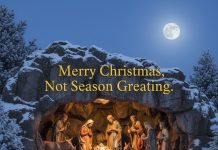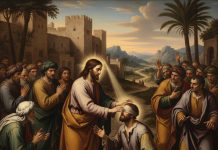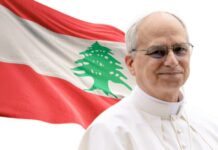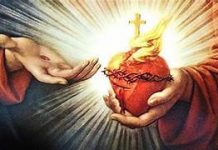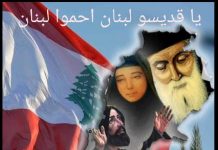A Biography of Saint Matthew the Evangelist, Apostle, on the Anniversary of his Annual Feast Day
Elias Bejjani/November 16/ 2025
سيرة القديس والرسول متى الإنجيلي في ذكرى عيده السنوي
الياس بجاني/16 تشرين الثاني/2025
تواريخ الإحتفال بعيد القديس متى في الكنائس الشرقية والغربية
تحتفل الكنيسة الغربية (الفاتيكان) بعيد القديس متى بتاريخ 21 أيلول من كل سنة، في حين تحتل الكنائس الشرقية، ومنها المارونية حسب السنكسار والتقليد الإنطاكي بتاريخ 16 تشرين الثاني
الاسم والهوية
القديس متّى هو أحد الاثني عشر رسولاً، وأحد كتّاب الأناجيل الأربعة. اسمه الأصلي هو لاوي بن حلفى، ويُعرف باسم متّى الذي يعني “عطية الرب” أو “هبة الله”، وهو اسم اكتسبه على الأرجح بعد انضمامه إلى تلاميذ المسيح كدلالة على عطية التوبة والخلاص التي نالها.
من جابي الضرائب إلى التلميذ: دعوة التغيير الجذري
كانت مهنة القديس متّى قبل دعوته هي جباية الضرائب (العشّار)، في كفرناحوم على بحر الجليل. كانت هذه المهنة في المجتمع اليهودي مكروهة ومحتقرة.
الدعوة والتحوّل
يروي الإنجيل كيف مرّ به يسوع في (متّى 09: 09) جالساً في مكان الجباية وقال له: “اتبعني”، فقام متّى فوراً وترك كل شيء – المال، النفوذ، والمهنة المضمونة – ليتبع المسيح. هذا التحوّل الفوري، دون مساومة أو تردد، يجعله النموذج الأسمى للتوبة الحقيقية والالتزام الكامل.
كاتب الإنجيل الأول: إنجيل الملكوت
يُجمع التقليد الكنسي القديم على أن القديس متّى كتب إنجيله أولاً، نحو عام 50 أو 60 ميلادياً، وأنه كتبه باللغة الآرامية (أو العبرية) لأبناء جلدته اليهود في سرائيل، ثم تُرجم لاحقاً إلى اليونانية.
المحاور الأساسية في إنجيله
إنجيل الملكوت: هدف متّى الرئيسي هو إثبات أن يسوع الناصري هو المسيح المُنتظر (المسيا).
جسر العهدين: ركّز على تحقيق النبوءات العبرية، حيث استشهد بالعهد القديم أكثر من أي إنجيلي آخر، غالباً بعبارة: “لكي يتمّ ما قيل بالأنبياء…”.
تعاليم يسوع: جمع متّى تعاليم يسوع في خمسة خطابات رئيسية ومنظّمة، أبرزها:
موعظة الجبل (متّى 05-07): دستور الملكوت الجديد.
الأمثال (متّى 13): إيضاح أسرار ملكوت السماوات.
نشاطه الرسولي الواسع
بعد صعود المسيح إلى السماء وحلول الروح القدس، انطلق القدّيس متّى في كرازة واسعة شملت:
إسرائيل واليهودية: بدأ رسالته بين أبناء شعبه مفسّرًا لهم كيف تمّ في يسوع تحقيق النبوءات.
سوريا والمناطق الأنطاكية: حيث انتشر إنجيله بكثافة، ومنها وصل إلى لبنان وقبرص والشرق الأدنى.
بلاد الرافدين: زار مناطق الرها ونصيبين والبصرة بحسب التقاليد السريانية.
فارس (إيران الحالية): أعلن كلمة الله في مناطق كانت تتبع الإمبراطورية الفارسية.
الحبشة (إثيوبيا): يُرجَّح أنّ استشهاده كان هناك، بعد أن اهتدى ملك البلاد إغليون بفضل خدمته ومعجزاته.
علاقة القديس متّى بلبنان
رغم عدم وجود أدلّة مباشرة على زيارة القدّيس متّى للبنان شخصيًا، فإن ارتباطه بلبنان عميق ومؤثّر ويتجسّد في النقاط التالية:
وصول إنجيله باكرًا إلى الكنيسة الأنطاكية: الكنيسة الأنطاكية كانت المرجع الروحي للمسيحيين في لبنان، ومنها انتشر إنجيل متّى إلى الساحل والجبل اللبنانيين، خصوصًا إلى الرهبان الأوّلين في وادي قاديشا.
تأثير إنجيله على الحياة الرهبانية: نصوص التطويبات وموعظة الجبل شكّلت أساسًا للتعاليم الرهبانية في القرون الأولى، فكان إنجيل متّى مرجعًا أساسيًا في الصلوات والقراءات الليتورجية والمراكز والمحابس القديمة في وادي قنّوبين.
حمل العديد من الكنائس والأديرة اسمه تكريمًا له: وهو دليل على محبّة المؤمنين اللبنانيين للقدّيس ولتعاليمه. من أبرز هذه الكنائس والرعايا:
كنيسة مار متى/مارونية/وادي الست (الشوف)
كنيسة مار متّى/مارونية/ كفرنبرخ (الشوف).
كنيسة مار متّى/مارونية/بشرّي (قضاء بشرّي)
كنيسة مار متّى/ارثوذكية/دده (الكورة).
استشهاده ورمزه الكنسي
تُجمع التقاليد على أن القديس متّى ختم حياته بـاستشهاد عظيم في إثيوبيا أو فارس، حيث طُعن بـرمح (أو سيف) أثناء وجوده على مذبح الكنيسة، دفاعاً عن إيمانه ورفضاً لتقديم الذبائح للأوثان.
الرمز الكنسي
يُرمز إلى القديس متّى في الفن المسيحي بـصورة إنسانٍ أو ملاك ذي وجه بشري. هذا الرمز مأخوذ من رؤيا حزقيال، ورُمِزَ إليه بالإنسان لأن إنجيله يبدأ بنسب يسوع كابن الإنسان، مركزاً على ناسوت المسيح ودخوله إلى التاريخ البشري.
الخلاصة الروحية: رسول الملكوت الذي ما زال صوته حاضرًا
إن الاحتفال بعيد القديس متّى هو دعوة قوية للتأمل في:
التوبة الصادقة: التي تغيّر مسار الإنسان مهما كان ماضيه.
أولوية الملكوت: حيث يذكّرنا بضرورة تقديم محبّة المسيح على كل غنى دنيوي.
أمانة الإنجيل: الذي دوّنه متّى ببراعة وقدمه للعالم كدليل لملكوت السماوات.
ارتباط الكنيسة اللبنانية العميق بالتراث الرسولي والإنجيلي: الذي أسس عليه الرهبان الأوائل حياتهم.
القديس متى هو الرسولٌ الذي ما زال صوته حاضرًا عبر إنجيله، يذكّر المؤمنين بأن الملكوت يبدأ في القلب، وأن الدعوة الإلهية قادرة أن تغيّر كلّ شيء.
**الكاتب ناشط لبناني اغترابي
عنوان الكاتب الألكتروني
Phoenicia@hotmail.com
رابط موقع الكاتب الألكتروني
https://eliasbejjaninews.com
A Biography of Saint Matthew the Evangelist, Apostle, on the Anniversary of his Annual Feast Day
Elias Bejjani/November 16/ 2025
The Feast Days of Saint Matthew in the Eastern and Western Churches
The Western Church (the Vatican) celebrates the Feast of Saint Matthew on September 21 of every year, while the Eastern Churches — including the Maronite Church according to the Synaxarium and the Antiochian tradition — commemorate him on November 16.
Name and Identity
Saint Matthew is one of the Twelve Apostles and one of the four Holy Evangelists. His original name was Levi, son of Alphaeus, but he became known as Matthew, meaning “Gift of the Lord” or “God’s gracious gift.” He likely received this name after joining the disciples of Christ, as a sign of the grace of repentance and salvation granted to him.
From Tax Collector to Disciple: A Call of Radical Transformation
Before his calling, Matthew was a tax collector, working in Capernaum on the Sea of Galilee—an occupation despised and rejected in Jewish society.
The Divine Call and the Immediate Change
The Gospel recounts how Jesus passed by Matthew as he sat at the tax booth (Matthew 09:09) and said to him, “Follow Me.”Matthew rose at once, leaving behind everything—wealth, power, and a secure profession—to follow Christ. This immediate response, without hesitation or negotiation, makes him the perfect model of true repentance and total devotion.
Author of the First Gospel: The Gospel of the Kingdom
Ancient Church tradition holds that Saint Matthew composed his Gospel first, around 50–60 A.D., writing originally in Aramaic (or Hebrew) for his own Jewish people in Israel. It was later translated into Greek.
The Core Themes of His Gospel
The Gospel of the Kingdom
Matthew’s chief purpose is to proclaim that Jesus of Nazareth is the long-awaited Messiah.
The Bridge Between the Old and the New Covenants: He cites the Old Testament more than any other Evangelist, often using the phrase: “that it might be fulfilled which was spoken by the prophets.”
The Teachings of Jesus: Matthew arranged the Lord’s teachings into five major discourses, most notably:
The Sermon on the Mount (Matthew 05–07): the charter of the New Kingdom.
The Parables (Matthew 13): revealing the mysteries of the Kingdom of Heaven.
His Apostolic Ministry
After the Ascension of Christ and the descent of the Holy Spirit, Saint Matthew carried the Gospel far and wide. Among the regions he evangelized:
Israel and Judea
He began among his own people, explaining how the prophecies were fulfilled in Jesus.
Syria and the Antiochian Regions
From here, his Gospel spread widely—reaching Lebanon, Cyprus, and the Near East.
Mesopotamia
According to Syriac tradition, he preached in Edessa, Nisibis, and Basra.
Persia (modern-day Iran)
He proclaimed the Word of God in territories under the Persian Empire.
Ethiopia
Tradition holds that he was martyred there, after the king Eglion accepted the faith through Matthew’s miracles and teaching.
Saint Matthew’s Relationship to Lebanon
Though no direct evidence confirms that Saint Matthew visited Lebanon personally, his connection to the country is deep and spiritually significant:
1. His Gospel Reached Lebanon Early Through the Church of Antioch
The Antiochian Church—mother of the Lebanese Christians—was the gateway through which the Gospel of Matthew spread to the Lebanese coast and mountains, especially to the early monks of the Holy Valley (Wadi Qadisha).
2. Influence on the Monastic Life of Lebanon
The Beatitudes and the Sermon on the Mount formed the backbone of early monastic teachings.
Thus, Matthew’s Gospel became a primary source for liturgical readings, prayers, and the spiritual life in ancient hermitages of Qannoubine.
3. Numerous Lebanese Churches Honor His Name
This reflects the deep veneration of the Lebanese faithful for the Apostle and his teachings. Among the churches dedicated to him:
Saint Matthew Church — Maronite, Wadi el-Sitt (Chouf)
Saint Matthew Church — Maronite, Kfarnabrakh (Chouf)
Saint Matthew Church — Maronite, Bsharri (Bsharri District)
Saint Matthew Church — Greek Orthodox, Deddeh (Koura)
His Martyrdom and His Ecclesiastical Symbol
Tradition agrees that Saint Matthew sealed his life with a glorious martyrdom in Ethiopia or Persia, where he was pierced by a spear (or sword) while standing at the holy altar, refusing to offer sacrifice to pagan idols and steadfastly confessing Christ.
His Symbol
In Christian iconography, Saint Matthew is represented by a man or an angel with a human face—a symbol drawn from the vision of Ezekiel. He is represented by the man because his Gospel begins with the genealogy of Christ, the Son of Man, emphasizing the humanity of the Savior and His entrance into history.
Spiritual Conclusion: The Apostle of the Kingdom Whose Voice Still Speaks
The Feast of Saint Matthew calls us to reflect upon:
True repentance that transforms every life, no matter the past.
The primacy of the Kingdom, reminding us to place the love of Christ above all earthly riches.
The fidelity of the Gospel, which Matthew wrote with divine inspiration as a guide to the Kingdom of Heaven.
The deep bond between the Lebanese Church and the apostolic, evangelical heritage upon which the early monks built their life of prayer and holiness.
He is the Apostle whose voice still resounds through his Gospel, reminding all believers that the Kingdom begins in the heart, and that the divine call has the power to transform everything.

